Special to Washington Examiner
Jordan Wright
October 2010
It was what I call a pajama day. A damp, grey, stay-at-home kind of day. Leaves the color of wet tobacco clung to car windows like parking decals and the fruits of the hackberry and hawthorn trees stained the sidewalks with their juice. The chill of autumn came early, bringing with it a light drizzle after a long night of steady rain. But this was not a day for burrowing beneath the duvet. A visit to the Washington, DC home of Joan Nathan, the great lady of Jewish cookery, was on the calendar and nary a dark cloud would put the squeeze on a much-anticipated luncheon date with the acclaimed author. I was looking forward to discussing her soon to be released eleventh book, “Quiches, Kugels and Couscous – My Search for Jewish Cooking in France” (Knopf).
I entered her well-appointed kitchen, chock-a-block with family mementoes, children’s drawings, books and artifacts, and immediately was smitten with the aroma of her anise-scented oatmeal bread wafting across the room. I ask you, no, I dare you to tell me that there is anything more welcoming than the scent of freshly baked bread.
At a long wooden table before my gourmand-weary eyes rested a bowl of Nathan’s homemade chicken soup with two golden orbs afloat. Redolent of carrots, ginger and nutmeg and bathing in a clear broth with chunks of light and dark chicken meat, the matzo balls glistened irresistibly in the wide white bowl. Curiously each one seemed formed by a different hand, the result I assumed of two separate test kitchen efforts.
One wore the sylvan appearance of a white truffle, all nubbly and crevassed, while the other was smooth and evenly formed – the color of an Asian pear. The matzo balls were the handiwork of the renowned regionalist food writer and they were simple and glorious at the same time. To accompany the soup, a large round loaf of oatmeal bread studded with dates and walnuts was pulled from the oven. “Thump it for doneness.” Nathan cautioned her assistant, and the hollow sound reached into the adjoining dining room. The hot crusty loaf was served with Nathan’s favorite Plugra butter and a green salad with slices of red beets from her local farmers market.
Joan Nathan has been the sole voice of Jewish cooking in America since 1975 when her first book, The Flavor of Jerusalem, was published while she was living and working in Israel for Mayor Teddy Kollek. After she moved to New York City she was one of the founders of the ethnically diverse Ninth Avenue International Food Festival when she worked first under Mayor John Lindsay and later Mayor Abe Beame. Here in Washington her decades-long commitment to local food kitchens like Martha’s Table and DC Kitchen, where she is known for her fundraising “Sunday Night Suppers”, a collaborative dining series with Alice Waters, Tom Colicchio and José Andrés, has endeared her to those in the slow food community.
Many know Nathan from her nationally syndicated PBS show, Jewish Cooking in America with Joan Nathan and as a regular contributor to The New York Times Food Arts Magazine. A two-time James Beard award winner, she is scholar, memoirist and cook in this latest venture.
“France is the link from Israel to America, as far as Jewish food, because Ancient Israel is where all of our foods started before going to Europe and then coming to America. Jewish cooking in France is closer to the original cuisine,” she explained.
She prepares the reader by providing centuries-old historical context for the creation, preservation and tradition of Jewish cookery in France. To understand how certain foods and methods of preparation evolved throughout France, Nathan shows it is necessary to know how the Jewish culture both influenced and was influenced by French cuisine. Not only did they trade in beans, sugar, barley, garlic and other precious foodstuffs, but they brought exotic spices, the art of making fois gras, carp served with sauce verte, and even introduced hot chocolate to the French culinary experience.
Thankfully the book offers far more than the catchy three-dish alliterative title suggests to the reader. Among the more than 200 recipes that have their origin in Spain, Morocco, Portugal, Germany and the Mediterranean, you’ll find such gems as Paul Bocuse’s Black Truffle Soup Elysée, tweaked by Nathan’s kosher re-interpretation; Baba au Rhum from the tiny 16-seat restaurant, Les Arômes outside of Marseilles; and a recipe for a hearty Alsatian Choucroute from a doctor in Strasbourg.
Nathan’s approach to the recipes is very forgiving, allowing the cook to substitute ingredients. “It depends on what’s in the fridge,” she offers. “I think the important thing about cooking is that it should be quick but not processed.” In her mission to find and preserve recipes throughout France, she fills the book with firsthand stories from farmers, shopkeepers, home cooks, professional cooks and Holocaust survivors. This is the sort of treasured cookbook writing that will inspire cooks to experience Jewish food and its culture. The book itself took nearly 4 ½ years of travel, research and recipe testing to deliver to her distinguished culinary and literary editor, Judith Jones, who was also editor to the late Julia Childs.
As Nathan hand signed 400 bookplates for an upcoming book tour, we ate and spoke of food, family, religion and politics and the cities in which we have lived, traveled, worked and cooked. And as the day went on we nibbled on a large wedge of Comté accompanied by apples, plums and organic maple honey caramels from Sugar Revolution.
Here is her tasty recipe for Moroccan chicken from this marvelous new book.
Moroccan Chicken with Olives and Preserved Lemons
When Celine Bénitah cooks this dish, she blanches the olives for a minute to get rid of the bitterness, a step that I never bother with. If you keep the pits in, just warn your guests in order to avoid any broken teeth! Céline also uses the marvelous Moroccan spice mixture ras el hanout, which includes, among thirty other spices, cinnamon, cumin, cardamom, cloves, and paprika. You can find it at Middle Eastern markets or through the Internet, or you can use equal amounts of the above spices or others that you like. To make my life easier, I assemble the spice rub the day before and marinate the chicken overnight. The next day, before my guests arrive, I fry the chicken and simmer it.
4 large cloves garlic, mashed
Salt and freshly ground pepper to taste
1 teaspoon ground turmeric
1 to 2 tablespoons ras el hanout
1 bunch of fresh cilantro, chopped
4 tablespoons olive oil
One 3½- to- 4- pound chicken, cut into 8 pieces
1 teaspoon cornstarch
1 cup black Moroccan dry-cured olives, pitted
Diced rind of 2 preserved lemons
Mix the mashed garlic with salt and freshly ground pepper to taste, the turmeric, the ras el hanout, half the cilantro, and 2 tablespoons of the olive oil. Rub the surface of the chicken pieces with this spice mixture, put them in a dish, and marinate in the refrigerator, covered, overnight. The next day, heat the remaining 2 tablespoons olive oil in a large pan. Sauté the spice- rubbed chicken until golden brown on each side. Stir the cornstarch into 1 cup water, and pour over the chicken. Bring to a boil, and simmer, covered, for about 20 minutes. Add the olives, and continue cooking for another 20 minutes. Sprinkle on the preserved lemon, and continue cooking for another 5 minutes. Garnish with the remaining cilantro. Serve with rice or couscous. Yield: 4-6 Servings.
Preserved Lemons (Citrons Confits)
Preserved lemons are an indispensable item in my pantry cupboard. I use them all the time and believe they are best made at home. Although I have tasted lemons preserved in water or an equal mix of lemon juice and water, I much prefer them preserved in pure lemon juice. Many people scrape out and discard the pulp when using the lemons, but I often include the preserved pulp. I blend a preserved lemon in with my hummus, sprinkle the rind on grilled fish, and stuff my chicken with a whole lemon, and I dice preserved lemons and mix them into salads, rice dishes, and vegetables. In addition to regular lemons, you can also use Meyer lemons or, as Irene Weil does, even kumquats. 8 lemons (about 1½ pounds) About ½ cup kosher salt ,1 cup fresh lemon juice, plus more if necessary 2 tablespoons olive oil . Cut off the very ends of each lemon. Cut each one lengthwise into quarters, cutting to but not through the opposite end. Sprinkle 2 tablespoons of salt into the cut sides of each lemon. Put the lemons in a large jar (it’s fine if you have to squeeze them in, because they will shrink), and cover completely with lemon juice. Let sit for a day. The next day, if they are not covered with lemon juice, pour a thin film of olive oil over the lemons. This will help keep them sealed while they preserve. Put the jar in the refrigerator and allow to cure for 2 to 3 weeks. Before using, scrape off the pulp if desired. Yield: 8 Preserved Lemons
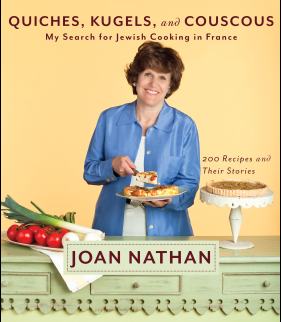
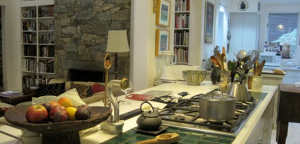
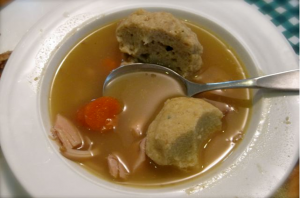
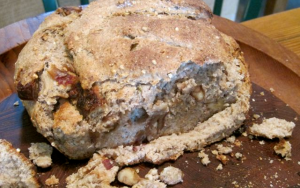
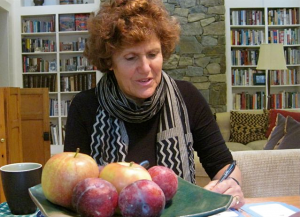
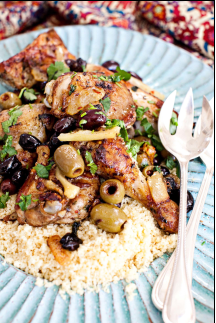
Leave a Reply